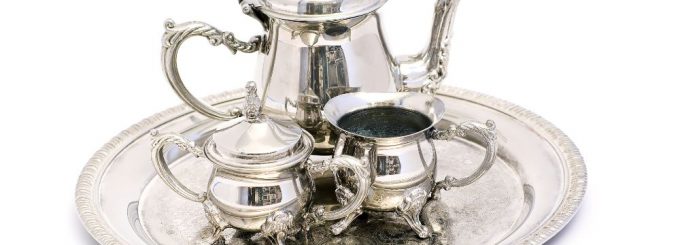How Does Sterling Silver Differ From Pure Silver?

Those that are shopping for silver, whether it is jewelry or cutlery, will eventually come across the word “sterling silver.” Although silver and sterling is sometimes used interchangeably, technically they are not exactly the same. Below is a description of sterling and how it differs from pure silver.
Pure Silver
Pure silver is also called fine silver and has a silver content which is 99.9 percent. This is the silver that is usually found in coinage, and due to its softness it is typically combined with different metals to increase its hardness.
Sterling Silver
Sterling silver is a type of alloy which results from copper being combined with pure silver to produce a compound that has greater durability. Sterling silver does not have the same purity as pure silver, and will usually be about 92.5 percent while 7.5 percent will be copper or metals such as zinc or nickel. Some of the silver used in coins is actually 90 percent.
Silver Tarnishing
Despite the fact that sterling silver has much greater durability than pure silver, this comes at a cost. The presence of the other metals makes the alloy particularly vulnerable to tarnishing. The reason for this is because nickel, copper and zinc have a greater tendency to react with elements such as oxygen. Objects made with sterling silver will frequently be plated using a pure silver layer that is thin and designed to enhance the object’s shine.
This is why, if you read the label on silver objects in stores, some of them will say “plated with sterling silver.” This simply means the product is comprised of some nickel, copper or zinc, along with thin silver plating, which will usually wear off as time passes. Such items will usually be cheaper than true sterling silver.
Silver Markings
Fine silver will also be stamped using markings such as .999, 99.9 or 999, which is an indication of the amount of silver that is present within the product. American made sterling silver is usually marked at 92.5, .925 or simply 925. Jewelry that has a lower purity than this will not be designated sterling. However, sterling silver that is sold in Europe or other countries may indeed have a purity that is beneath 92.5 percent and still be considered sterling. For instance, in Germany silver content might be around 80 percent, while in Russia the purity can be under 90 percent.
Since silver standards around the world aren’t uniform, it is best to research the silver content of any item you’re considering buying and the marks which have been stamped on it.
How To Test Silver To Determine Purity
The best way to test silver is through an acid test. A bit of shaving will be extracted from the object and then placed in an acid solution to determine if the color changes; if the color of the object changes this means the purity is beneath 92.5 percent. Test kits for precious metals can be purchased online.


